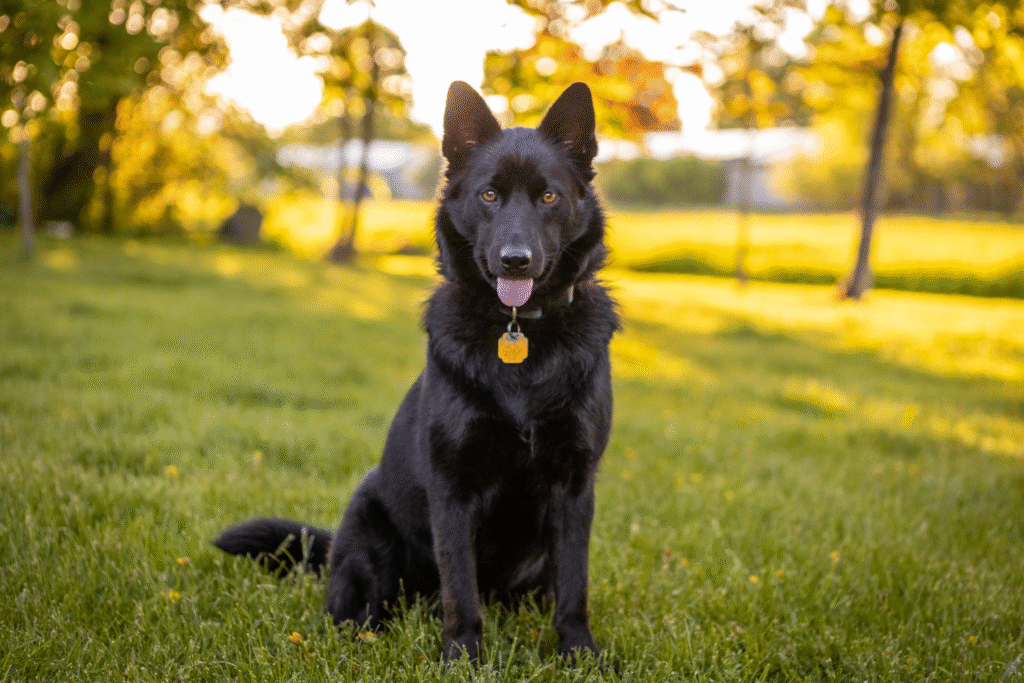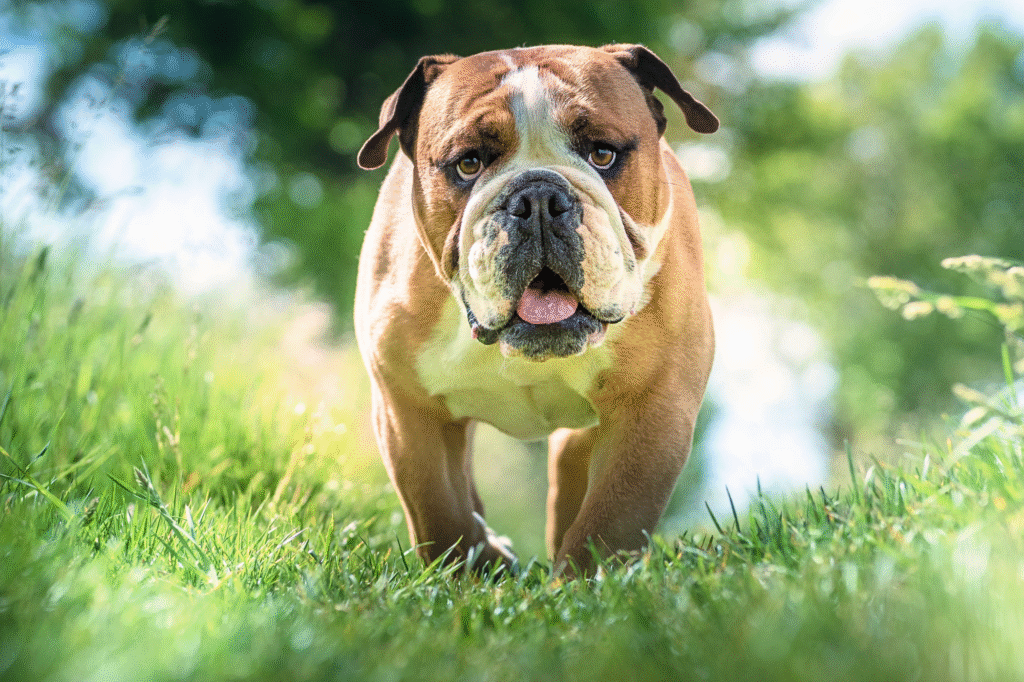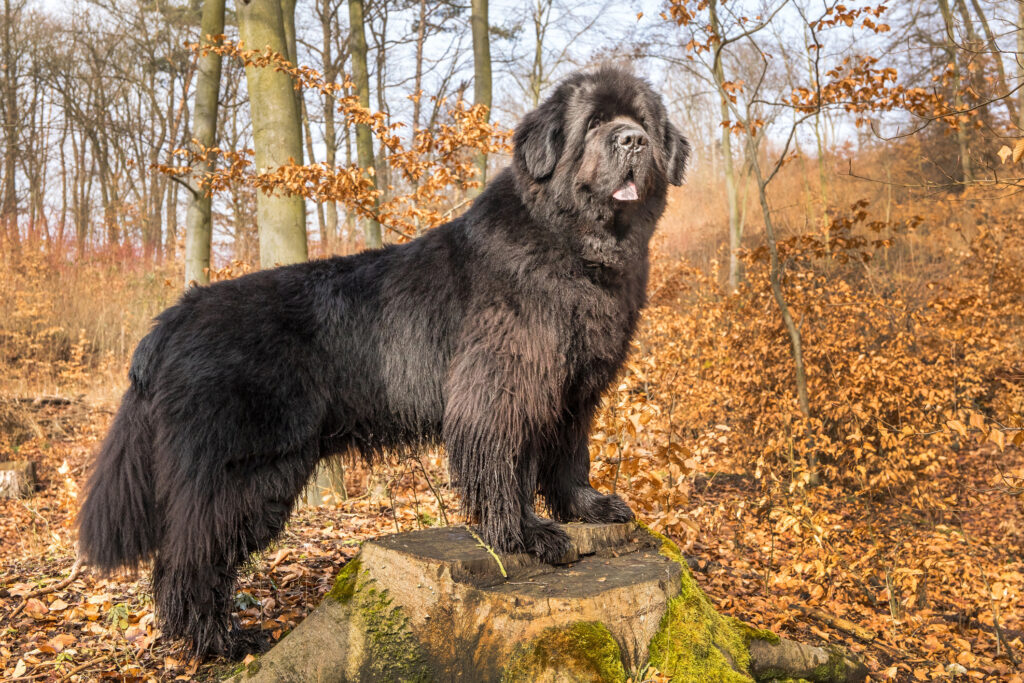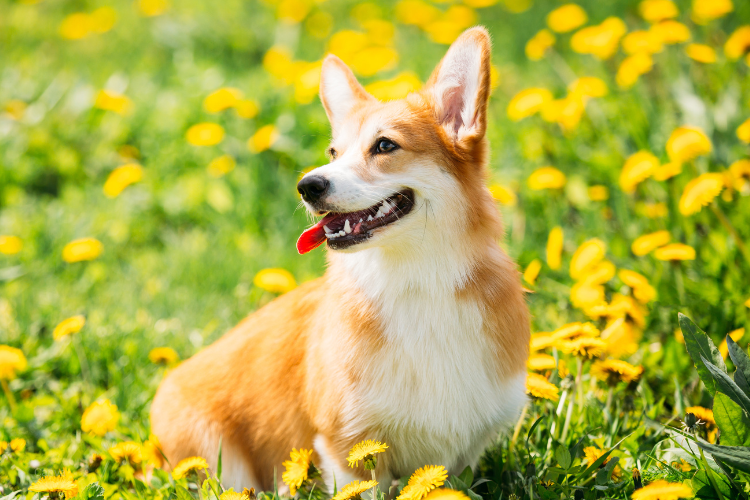Joint damage often starts long before it’s visible.

Arthritis in dogs doesn’t wait until old age, it can begin quietly in middle age or even earlier for certain breeds. Genetics, rapid growth, and years of wear on the joints can cause cartilage to thin long before an owner notices stiffness or slowing down. Many dogs simply mask discomfort until the damage is done. Recognizing which breeds are most vulnerable helps owners stay one step ahead with prevention, early vet screenings, and lifestyle changes that keep them moving comfortably well beyond their seventh birthday.
1. Labrador Retrievers wear their joints down too soon.

Labs have a genetic tendency toward hip and elbow dysplasia, which sets the stage for early arthritis. Their enthusiasm for activity—jumping, fetching, swimming—makes things worse over time. According to the American Kennel Club, Labs are one of the most commonly diagnosed breeds for degenerative joint disease, often showing stiffness by age five. Their combination of size, appetite, and high energy means even minor weight gain adds strain. Owners often mistake early limping for fatigue, but the wear on cartilage is usually already underway by that point.
2. German Shepherds battle arthritis as part of their legacy.

This breed’s sloped back, while iconic in appearance, unfortunately increases pressure on the hips and knees. Over the years, it can accelerate joint inflammation and cause arthritis earlier than most owners expect, often before age seven as stated by the Veterinary Centers of America. Working Shepherds and sport dogs develop symptoms even faster due to the physical strain of daily activity. Their strength and endurance mask pain at first, but subtle changes in posture and reduced jumping enthusiasm are often the earliest clues something deeper is happening.
3. Golden Retrievers often pay a quiet price for loyalty.

Golden Retrievers’ gentle nature hides a vulnerability to early joint degeneration, particularly in the elbows and hips. As reported by the Canine Health Foundation, their risk of arthritis ties closely to inherited dysplasia and rapid growth during puppyhood. Because Goldens rarely complain, owners may only notice when walks shorten or stairs become a challenge. Many still wag through discomfort, making early detection difficult. Consistent joint supplements and weight management from a young age can delay the pain that too often shows up by middle age.
4. Rottweilers grow strong but their joints grow tired.

Few breeds combine power and bulk like Rottweilers, and that mass puts serious pressure on their limbs. They’re prone to hip and shoulder arthritis, often before their seventh year. Their rapid muscle development adds strain to still-developing bones in youth. By the time stiffness appears, cartilage wear may already be advanced. Owners sometimes confuse slower movement with laziness, but the truth is often physical fatigue from joint inflammation. Keeping them lean and avoiding high-impact play during growth years can make a huge difference later on.
5. Great Danes outgrow their own skeletal stability early.

With their enormous size and fast growth rate, Great Danes experience joint stress from puppyhood onward. Their weight alone is enough to wear down soft tissue supporting their hips and knees. Most show early arthritis symptoms long before turning seven, especially those raised on calorie-dense diets that accelerate growth. Even small injuries can trigger chronic inflammation. Gentle, steady exercise and controlled feeding are vital because this breed’s sheer height makes it impossible to disguise joint weakness for long.
6. Bernese Mountain Dogs lose joint strength before their prime.

These gentle giants are among the most arthritis-prone breeds, largely due to inherited orthopedic conditions. Their bodies mature slowly, but their weight and bone density add immense strain over time. By middle age, even light exercise can cause stiffness or limping. Berners also face a shorter lifespan, so joint degeneration happens earlier relative to smaller breeds. Careful conditioning and anti-inflammatory nutrition can extend their mobility, but arthritis is almost an inevitable part of their story if not managed proactively.
7. Boxers push through pain until their joints give in.

Athletic and muscular, Boxers seem unstoppable until their back legs start betraying them. Their strong frames mask early arthritis, which often stems from hip and knee strain. Years of bounding energy catch up quickly, especially in dogs that are overweight or frequently jump from high surfaces. Owners often miss the first signs because Boxers remain playful despite discomfort. Subtle stiffness after naps or hesitation before running can be the earliest indications their joints are beginning to wear.
8. Bulldogs struggle with joint pain from structural limits.

Bulldogs carry most of their weight in their front half, which creates uneven stress across their body. The combination of short legs, heavy chests, and congenital joint issues leads to arthritis often before seven. Their limited mobility hides worsening inflammation since they’re never particularly athletic to begin with. Even short walks can cause discomfort over time. Gentle, low-impact movement and joint support from puppyhood are essential, because once stiffness sets in, recovery is difficult for this compact, heavy breed.
9. Saint Bernards develop arthritis before maturity fully sets in.

Massive and slow-moving, Saint Bernards seem sturdy, but their joints pay for that size early in life. The heavy load on their hips and elbows means cartilage deteriorates quickly. By six or seven years old, many show noticeable joint discomfort. Their laid-back personality can make it hard to spot at first—they simply rest more or move less. Once they begin avoiding stairs or standing with effort, arthritis has often already taken hold. Preventive care should start before their first birthday.
10. Mastiffs carry too much weight for their own frame.

Mastiffs develop arthritis young due to the immense burden their body mass places on skeletal structure. Each step puts pressure on joints that weren’t designed for such scale. Their thick bones can’t fully offset the wear from years of impact, especially if exercise isn’t balanced carefully. They often show pain in hips and hocks before age seven. Controlling growth rates, keeping weight low, and encouraging gentle movement are key for preserving comfort in this colossal breed.
11. Newfoundlands tire their joints long before their spirit fades.

These dogs are strong swimmers and natural rescuers, but their size and water-heavy play style stress their joints early. Hip dysplasia is common, and the added resistance of swimming can accelerate degeneration if overdone. By age six, many begin slowing down despite still having an eager temperament. The contrast between their emotional youth and physical aging is striking. Consistent, low-impact conditioning can delay discomfort, but vigilance is necessary to maintain their balance between strength and strain.
12. Corgis carry hidden risk behind their cheerful gait.

Despite their small stature, Corgis’ long spines and short legs place constant stress on joints and vertebrae. They’re not immune to arthritis—in fact, they often show early symptoms due to back and hip misalignment. Excess weight makes things worse, compressing joints that are already working overtime. Owners may notice subtle stiffness after activity or reluctance to jump onto furniture. Managing diet and offering supportive surfaces go a long way in keeping these energetic herders comfortable well into adulthood.
